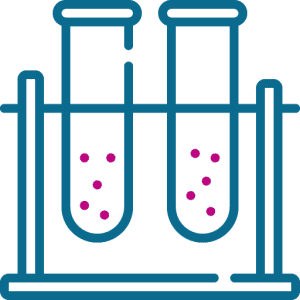ENG (erythrocyte sedimentation rate)

It is performed to distinguish chronic inflammation from acute, bacterial or viral inflammation.
ENG or erythrocyte sedimentation rate – a characteristic of erythrocyte sedimentation on the bottom of the tube that can indicate disease. A healthy person’s ENG is 4-10 mm (2 mm in newborns) per hour. ENG speeds up in anaemia and slows down in polycythaemia (lots of cells in the blood). The acceleration of ENG is also associated with an increase in the concentration of fibrinogen in the blood, as it is absorbed by erythrocytes, reducing their surface charge (increasing the risk of clot formation). This can happen with inflammation and infectious diseases. Cholesterol speeds up erythrocyte sedimentation and lecithin slows it down. Physiologically, ENG increases with hard physical work and in the second half of pregnancy.
Erythrocyte sedimentation rate (ENG)
– similar to C-reactive protein (CRB), indicates the inflammatory phase and intensity. The test is used to distinguish chronic from acute inflammation, bacterial from viral. An average increase of up to 100mm/h in ENG allows to suspect acute and chronic infections, rheumatic diseases, risk of myocardial infarction and nephrotic syndrome. A very high increase in ENG – over 100 mm/h – allows the detection of strong inflammatory processes – bacterial and viral, anaemia, leukaemia. ENG can also increase during pregnancy and after strenuous exercise.
A decrease in ENG can be caused by dehydration, congenital or acquired heart defects, and corticosteroid therapy. Unlike C-reactive protein (CRB), ENG increases more slowly and later, and ENG can increase in the absence of inflammatory processes. CRB immediately returns to normal with recovery and retreatment of inflammation, and elevated ENG levels can persist for up to 2 weeks.
You can consult our family doctors.


